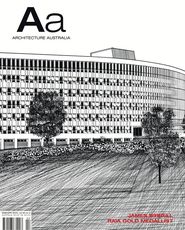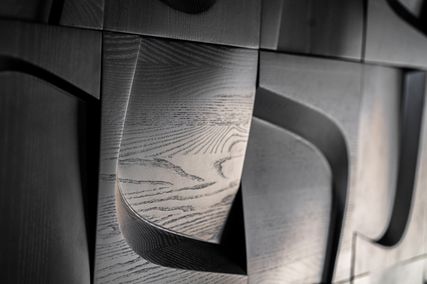MORE FARRELLY PLEASE
Doancha just love Elizabeth Farrelly’s articles (“Elegant Sheddery”, Architecture Australia vol 94 no 1, Jan/Feb 2005). They absolutely hurtle along. Just as you’re recovering from one amazing verbal image, jammed with triple and quadruple-plus word adjectives (I love ’em), you’re slammed with another, and another, and one more for sarse, until you’re all out of whack – the bleeding obvious smarting your five wits like one of those mega water pistols full of mace blasted right in your face. What is she on!? I want some too.
I’d love to see the world that escapes her barbs – or would I? Yeah, I think so – even though she, uncharacteristically caught out in the “front room” of journalism, thinks those lazy efforts of Walter-Burley-Griffin hater Sir John Sulman, the Sydney and Melbourne Buildings in downtown Canberra, are “gracious”. Nevertheless, give us more of Ms Farrelly.
JACK KERSHAW ARCHITECT
SUSTAINABLE FORESTS?
In his critique of the Adelaide Affordable Eco-Housing Competition (AA vol 94 no 1, Jan/Feb 2005), Steve Loo comments: “The selected timber is cypress pine, which is the only type produced through a sustainable forest industry in South Australia.” This is of great interest. Native cypress pine, while drought-resistant, is very slow growing, and has not done so well in plantations (not promoted by forestry industry, as it is no good for export woodchips). Forests of Murray pine were cut out of Victoria’s Riverina district and have not come back. So, on whose authority is the cypress pine industry sustainable? What conservation groups have given it the nod? The Forest Stewardship Council (FSC) certifies five Australian operations, all managed as plantations, with a total area of 533,225 ha. The species are eucalypts and radiata pine. None are in South Australia.
Certification of sustainable forestry operations is relatively new in Australia. Native forests and regrowth forests have not yet been certified by the FSC, as conservation groups are slow to agree on acceptable practice. The FSC is keen to make it happen, however, as everybody wants to log mature trees, not plantation thinnings. The Australian Forestry Standard (AFS) claims to be establishing a best-practice standard for sustainable forestry, but no conservation groups support it. The AFS certification of Tasmania’s largest export woodchipper, Gunns Ltd, shows how it is out of touch. While public protest in the forest is at its most extreme, and while Gunns Ltd is bringing a strategic litigation against public participation, how can we take it seriously? (Yes, they are using my name. Members of my family sold their interest in Gunns Ltd in the 1980s; I am appalled by the company’s actions.)
Use of the word sustainable is not covered by law, with less protection than the word architect. How can we trust any claim that timber is sustainable without a reliable benchmark? Other than the Sydney Olympic Games, which had its sustainable timbers assessed by Greenpeace, construction in Australia does not seek to be judged on the world stage. Our forests are being undersold and our government is not looking after future generations. As architects I know we hold such a small share of the market that it doesn’t matter, but in the next competition claiming to set an example of ESD, surely the terms should put some bounds on timber use that the majority would agree on.
SARAH GUNN ARCHITECT
ECOPOLIS
Nice to see “sustainability” given the front seat in the last issue. Steve Loo’s review of the Adelaide Affordable Eco-Housing Competition was the kind of erudite miniexposition that one might have expected of the writer, although it left me with a curious feeling of having missed something – a bit like the winning scheme that talks about the human presence but presents no images of people in its elaborate CAD imagery.
Loo properly draws attention to the context of the competition but also talks about the proximity of “the much-touted but never realized Ecopolis project” and “recent straw bale housing experiments”. Steve, they are part of the same thing. The straw bale housing experiments are four of the fourteen completed dwellings in the Christie Walk project (another thirteen apartments are scheduled for completion later this year). That project is a microcosm of the Halifax EcoCity Project, which was indeed “much touted”. Both designed by Ecopolis Architects, they are community-based initiatives to bring social and physical ecological design principles and processes into the inner city.
The “Ecopolis project” has been a very real, living experiment for some years. Christie Walk is its most complete manifestation – a place that Danielle McCartney said “demonstrates that sustainable living can be achieved in the inner city” and which “should be praised … for what it gives back to the community”. Unfortunately the AA article which referred to this (AA vol 93 no 5, Sept/Oct 2004, p. 36) failed to credit the architect.
The Ecopolis project is not “unrealized”. Perhaps it just isn’t being touted in a language that reaches the ears of the architectural intelligentsia?
PAUL DOWNTON ECOPOLIS ARCHITECTS















